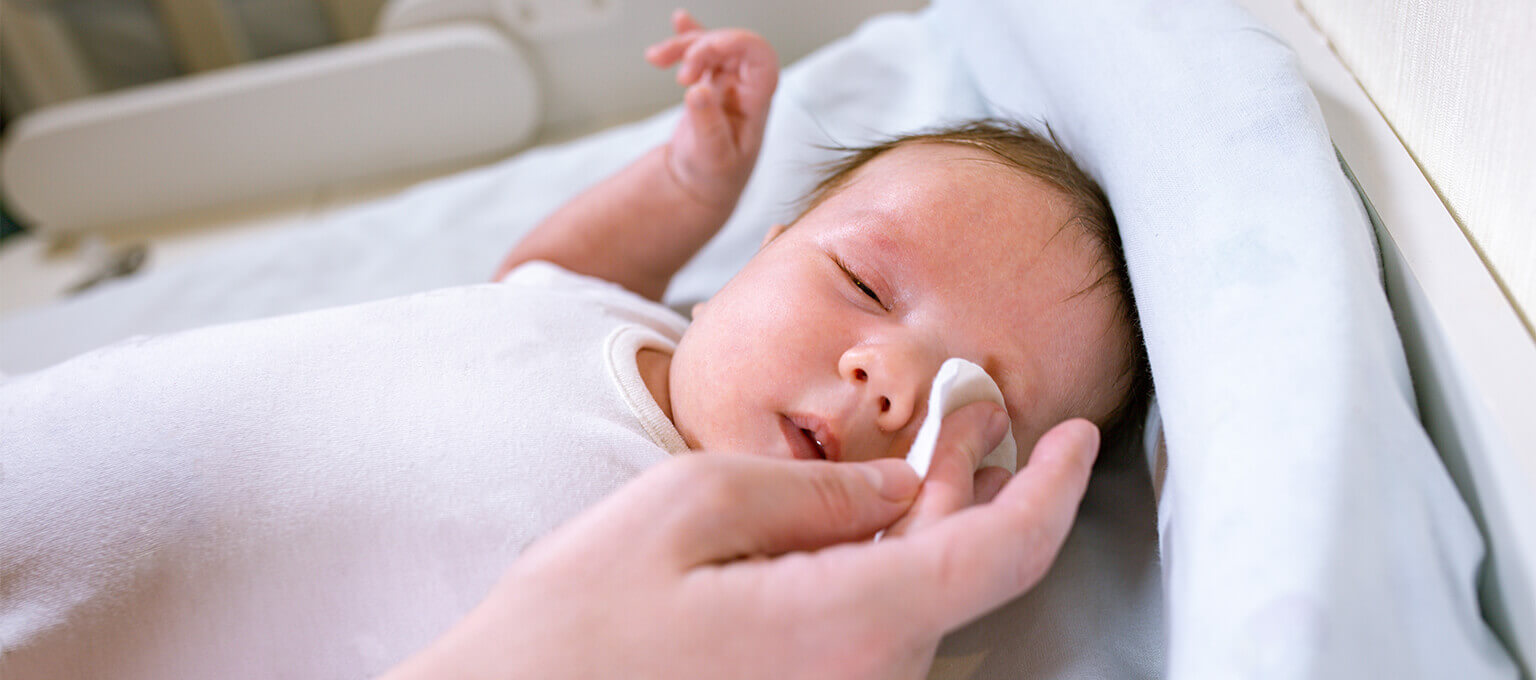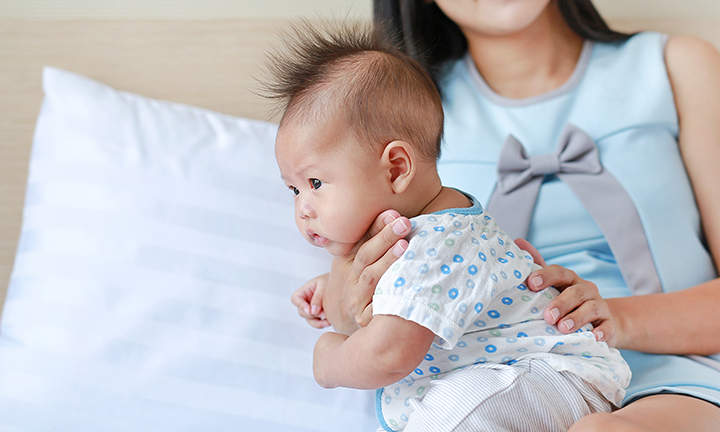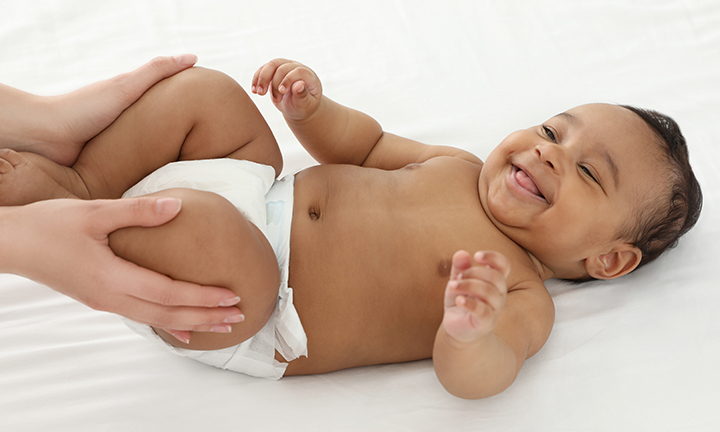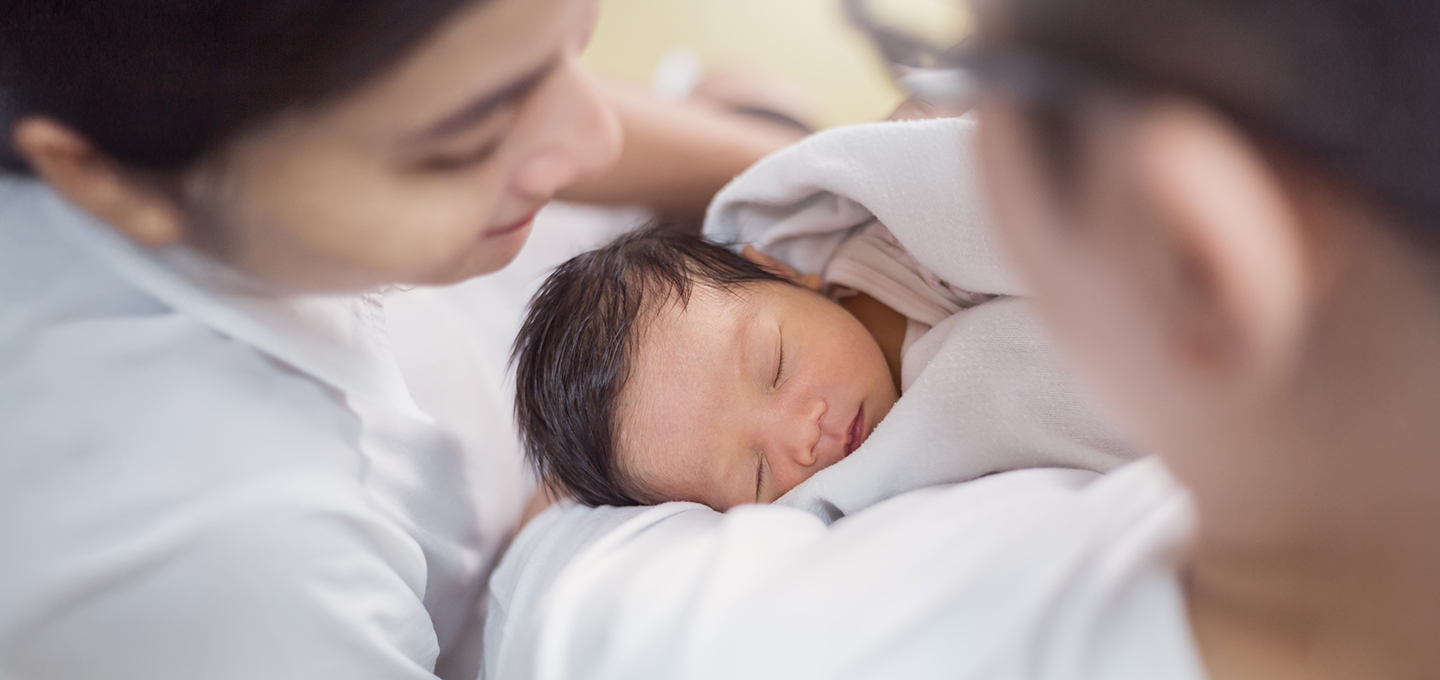
Conjunctivitis in Babies
You might spend a lot of time gazing into your baby’s eyes, especially during those first few weeks of bonding. If the eyes looking back at you seem a little red or pink, this could be a symptom of conjunctivitis, also known as ‘red eye’ or ‘pink eye’.
Although it can be uncomfortable for your baby, conjunctivitis usually clears up within a couple of weeks with the right treatment. It’s important to get a proper diagnosis by your doctor though, because the treatment differs depending on what’s causing the infection.
Read on to learn more about what causes conjunctivitis, what the symptoms are, how to treat it and help prevent its spread and when to call your doctor.
What Is Conjunctivitis?
Conjunctivitis is a common eye condition among children, although adults can get it too.
It happens when an infection or allergy causes inflammation of the thin tissue lining the inside of the eyelid (this is called the conjunctiva) and the white part of the eye.
The inflammation causes the blood vessels in the eye to become more visible. It’s this symptom that makes it look like the whites of the eye are red or pink, which is why it’s sometimes referred to as ‘red eye’ or ‘pink eye’.
Sometimes conjunctivitis is caused by a virus. In these cases, it can be a bit like the flu or a common cold. It can also be caused by a bacterial infection or an allergic reaction.
Just like a cold or flu, viral or bacterial conjunctivitis can spread easily. Sometimes your baby or toddler may also have other cold-like symptoms, such as a runny nose, cough or earache.
Conjunctivitis can be uncomfortable for your baby but it typically won’t affect his or her eyesight. Things may sometimes seem a little blurry for your little one if a little discharge remains on the surface of the eye, but this usually goes away with blinking or by you carefully wiping the eyes.
If you ever think your child may be having more serious problems with vision, see your doctor straight away.
Conjunctivitis Causes
It can be hard to pinpoint the exact cause of conjunctivitis in babies, however, the main causes are typically
Tell your doctor, midwife or health visitor if your baby has had contact with someone who has viral or bacterial conjunctivitis, or if you think there may be something that’s irritated his or her eyes.
To diagnose conjunctivitis, your doctor may take a swab of the discharge, to find out whether it’s being caused by a virus or bacteria. It’s important to know what’s causing the conjunctivitis, so that your doctor can decide what treatment, if any, is needed.
Knowing whether or not your conjunctivitis is infectious is also important so you can take extra steps to prevent the condition from spreading and reoccurring.
Conjunctivitis Symptoms
The symptoms of conjunctivitis can vary, depending on what’s causing it.
Does Your Baby Have Conjunctivitis or Just Sticky Eyes?
Not all stickiness of the eye is caused by conjunctivitis. If your little one’s eyes are a little gummed up but there’s no redness and no yellow or green discharge, it could just be a case of sticky eyes.
This is especially common in newborns and young babies, whose tear ducts are still developing.
Sticky eyes usually clear up on their own, but you can help them along by regularly cleaning your baby’s eyes with cotton wool or a cotton pad dunked in water that’s been boiled and cooled back down again. It’s helpful to strain any excess water from the cotton pad or wool before wiping.
Wipe outwards, starting from the corner of each eye next to the nose. Don’t forget to wash your hands before and after cleaning; and use a clean piece of cotton wool for each wipe and for each eye.
If you aren’t sure whether your baby has conjunctivitis or just sticky eyes, ask your health visitor, midwife or doctor for advice. It’s always best to do this sooner rather than waiting before symptoms worsen.
Conjunctivitis Treatment
Eye infections typically last a couple of weeks without treatment, but it’s always a good idea to see your doctor if you think your baby has conjunctivitis. That way, you can be sure of a proper diagnosis and that the right treatment is given, if needed.
If your newborn baby is still less than four weeks old, always have him or her examined by doctor immediately if you notice red or pink eyes or any other symptoms of conjunctivitis.
If the conjunctivitis is caused by a bacterial infection, your baby’s doctor or pharmacist may offer to prescribe a short course of antibiotic eye drops.
If a virus is behind the condition, antibiotics won’t be effective, but your doctor can give you advice and/or prescribe medicines to help soothe the symptoms while the viral infection lasts. In some cases, treatment with anti-inflammatory eye drops may be prescribed.
If your little one’s pink eyes are caused by an allergic reaction, your doctor may recommend antihistamine drops to relieve the symptoms.
One way of easing the symptoms of your baby’s conjunctivitis is to gently clean away any crusty deposits of discharge. For this you’ll need some clean cotton wool, soaked in water that’s been boiled and cooled down again.
Clean outwards from the corner of the eye next to the nose, and always use a clean piece of cotton wool for each wipe and for each eye.
Bacterial or viral conjunctivitis is very infectious, so take steps to prevent the infection from spreading.
When to Call the Doctor
See your doctor immediately if you suspect that your newborn baby (less than four weeks old) might have conjunctivitis.
It’s also important to seek urgent medical attention if your baby seems to have any of the following symptoms:
How to Prevent Conjunctivitis From Spreading and Reoccurring
Viral and bacterial conjunctivitis are both very infectious, and spread very easily in water droplets. This means it can be passed on by coughing and sneezing, or through contact with baby blankets, towels, face flannels and other items.
Here are some ways of helping prevent the spread of infectious conjunctivitis:
If your baby has allergic conjunctivitis or irritation, these steps might help prevent it from reoccurring:
FREQUENTLY ASKED QUESTIONS
How we wrote this article The information in this article is based on the expert advice found in trusted medical and government sources, such as the National Health Service (NHS). You can find a full list of sources used for this article below. The content on this page should not replace professional medical advice. Always consult medical professionals for full diagnosis and treatment.
Read more about Newborn Baby
Related Articles
Join Pampers Club and get:














